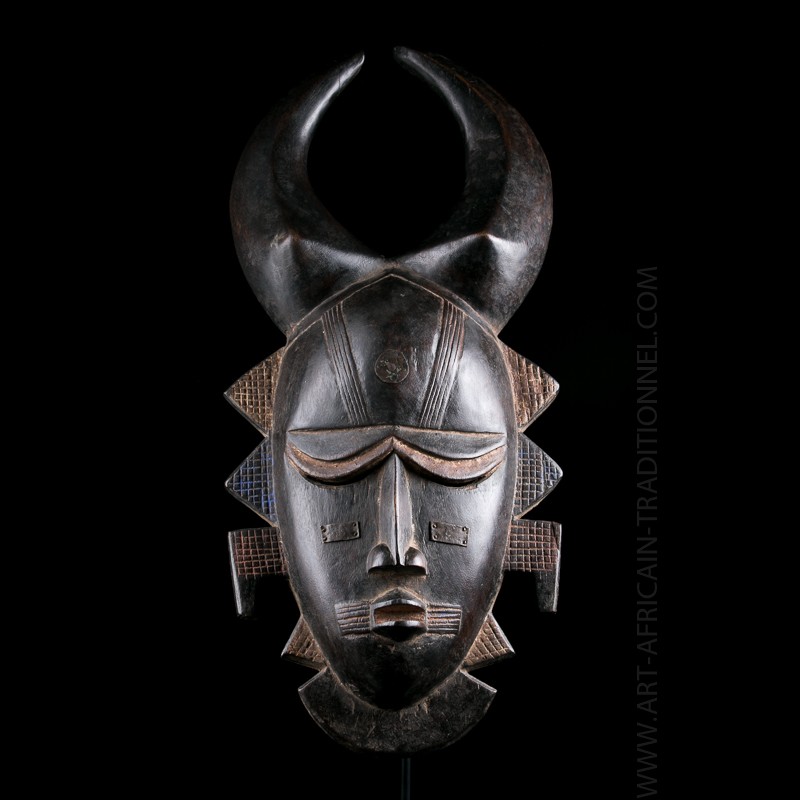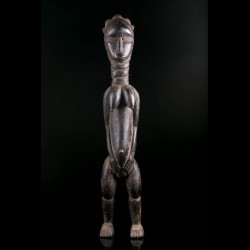






























Among the Muslim Mandé, the buffalo represents a sacrificial animal of great importance. It is illustrated in this mask with a scarified human face.
The Do society to which he belongs and the clan leaders organize the sacrifices at the end of Ramadan. This African mask depicting a buffalo is called Singinkuru-Ayna. He is associated with the image of "the Ancient Muslim" Horingyo.
Some Islamized ethnic groups, such as the Ligbi, close to Ghana, cousins of the Senoufo, have preserved some animist traditions through the society Dô which is perhaps a survival of Poro practiced among the Senufo. The inner face suggests a beautiful work with the adze and obvious traces of portage.
Data sheet

Among the Muslim Mandé, the buffalo represents a sacrificial animal of great importance. It is illustrated in this mask with a scarified human face.
The Do society to which he belongs and the clan leaders organize the sacrifices at the end of Ramadan. This African mask depicting a buffalo is called Singinkuru-Ayna. He is associated with the image of "the Ancient Muslim" Horingyo.
Some Islamized ethnic groups, such as the Ligbi, close to Ghana, cousins of the Senoufo, have preserved some animist traditions through the society Dô which is perhaps a survival of Poro practiced among the Senufo. The inner face suggests a beautiful work with the adze and obvious traces of portage.
